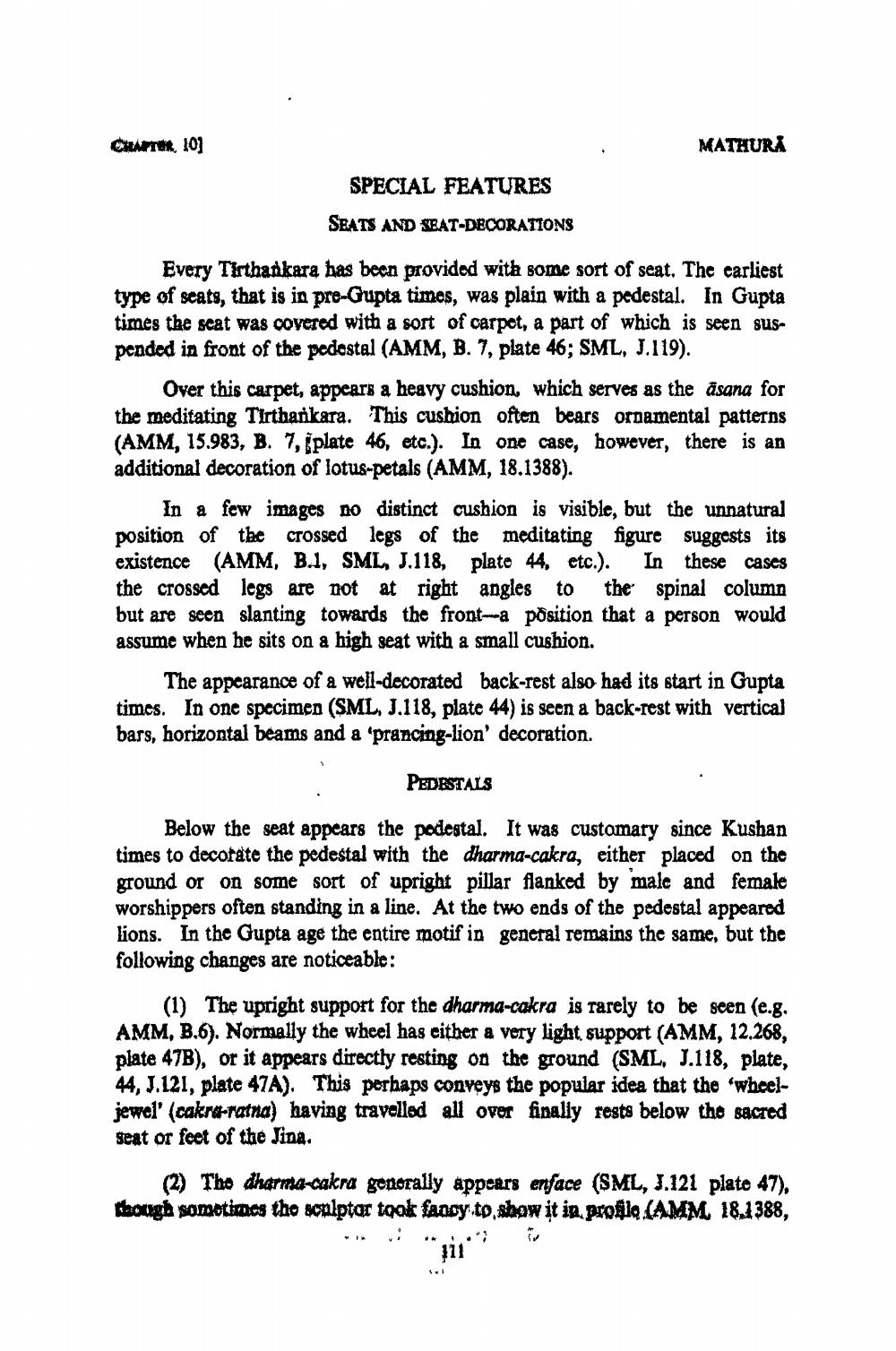________________
CHAPTER, 10]
SPECIAL FEATURES
SEATS AND SEAT-DECORATIONS
MATHURA
Every Tirthankara has been provided with some sort of seat. The earliest type of seats, that is in pre-Gupta times, was plain with a pedestal. In Gupta times the seat was covered with a sort of carpet, a part of which is seen suspended in front of the pedestal (AMM, B. 7, plate 46; SML, J.119).
Over this carpet, appears a heavy cushion, which serves as the asana for the meditating Tirthankara. This cushion often bears ornamental patterns (AMM, 15.983, B. 7, plate 46, etc.). In one case, however, there is an additional decoration of lotus-petals (AMM, 18.1388).
In a few images no distinct cushion is visible, but the unnatural position of the crossed legs of the meditating figure suggests its existence (AMM, B., SML, J.118, plate 44, etc.). In these cases the crossed legs are not at right angles to the spinal column but are seen slanting towards the front-a position that a person would assume when he sits on a high seat with a small cushion.
The appearance of a well-decorated back-rest also had its start in Gupta times. In one specimen (SML, J.118, plate 44) is seen a back-rest with vertical bars, horizontal beams and a 'prancing-lion' decoration.
PEDESTALS
Below the seat appears the pedestal. It was customary since Kushan times to decorate the pedestal with the dharma-cakra, either placed on the ground or on some sort of upright pillar flanked by male and female worshippers often standing in a line. At the two ends of the pedestal appeared lions. In the Gupta age the entire motif in general remains the same, but the following changes are noticeable:
(1) The upright support for the dharma-cakra is rarely to be seen (e.g. AMM, B.6). Normally the wheel has either a very light support (AMM, 12.268, plate 47B), or it appears directly resting on the ground (SML, J.118, plate, 44, J.121, plate 47A). This perhaps conveys the popular idea that the wheeljewel' (cakra-ratna) having travelled all over finally rests below the sacred seat or feet of the Jina.
(2) The dharma-cakra generally appears enface (SML, J.121 plate 47), though sometimes the sculptor took fancy to show it in profile (AMM, 18.1388,
111




